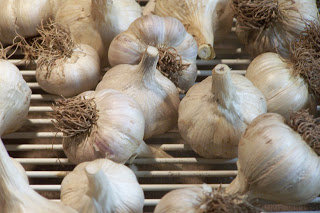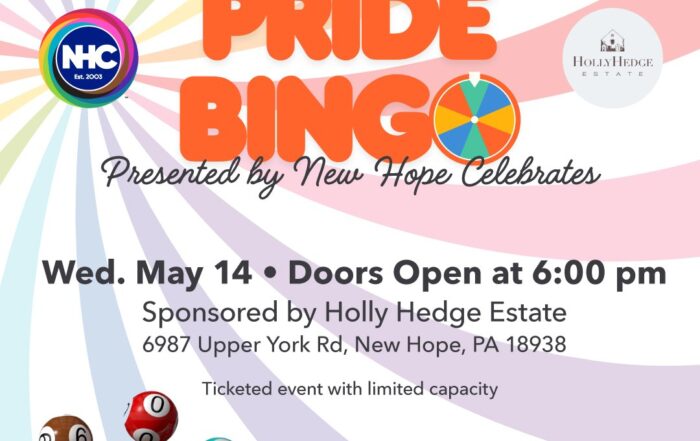
What better thing to do on a rainy day in January than take a look back at the year that was and reminisce on some of our greener achievements in 2012?
[smart-photo height=”600px” text_color=”bfdabf” thumb_width=”100″ thumb_height=”100″ transition_rows=”1″] [/smart-photo]The Pool-to-Pond Project
Tired of the constant maintenance of a pool that was rarely used, this past year we began the process of converting HollyHedge’s pool to a naturalized pond. The conversion was simple enough. When spring arrived, we pulled off the cover (and put it away for good) and installed an air-diffuser to maintain healthy oxygen levels in the water.
The air-diffuser ran for a couple of weeks, allowing oxygen levels to build up and remaining chlorine to dissipate. When we concluded that there was no chlorine left in the pool, we added some aquatic life to help build and maintain a pond environment. Our pond additions included freshwater snails and shrimp for scrubbing the water, crayfish, for breaking down larger organic debris, goldfish for bug control, and some aquatic plants to filter the water and provide a habitat for our pond critters. And that was about it for the work.
Then came the best part of all; we sat back and watched. The staff kept a keen eye on the pond. Each day, we would update each other about new arrivals to our pond. There were frogs of course, lots of frogs. A pair of turtles made the pond their home for a while (though they proved too elusive to photograph). And later in the season, the pond was frequented by dragonflies and the fish we had added had grown and multiplied to the point that, with a little searching, we could always find them.
As the season progressed, we planted the gardens surrounding the pond with vegetables, flowers, and herbs. Strawberries, beans, and peppers were grown in hanging baskets…while tomatoes and marigolds were planted in the terraced bed along one side of the pond…and planters were packed full of root vegetables on the other side of the pond.
We considered year one of the pond a great success. Retiring our pool has allowed us to give up the annual maintenance. No more chemical purchases, no more filter running constantly, no more vacuuming and skimming. Now, we just sit back observe and enjoy our pond. Whether it’s a turtle sunning on a log or a tomato ripening on a vine, everyday, there is something new to discover.
[smart-photo text_color=”bfdabf” thumb_width=”100″ thumb_height=”100″ transition_rows=”1″] [/smart-photo]
The Re-purposed Planters
Going into this past season, we had been kicking around the idea of building some planters outside of the main catering kitchen. Why not bring the gardens even closer to the chefs and take advantage of a sunny spot just outside the kitchen door? Spring was rapidly approaching and we were still trying to decide how to build the planters. That’s when our chef noticed the 6 wooden bins stacked at the far end of the building that had been used to deliver some construction materials over the winter. There were 6 boxes just waiting to be hauled away…they couldn’t have been more perfect. They would be just the right size and would be recycled material, making our garden project even greener.
Our handyman and our gardener set to converting the bins to planters. They were lined with some excess pond liner we had lying around, wrapped in burlap left over from the winter season, and trimmed with some decking material to make a nice ledge to work on. Filled with a local bedding mix, amended with some of our own favorite organic fertilizers, just like that, our planters were complete. We placed four of the planters along the wall just outside of the kitchen…two planted with tomatoes, eggplants, peppers, beans and nasturtium…the other two with cucumbers and parsley. The final two planters were placed in our previously mentioned pool-to-pond area. Here, we grew root crops early on in the season (leeks and celeriac pictured here)…followed by eggplant and okra in the summer (and more nasturtium of course). We were quite pleased with how our planters worked this season. They provided a generous harvest of vegetables and herbs and were surprisingly easy to maintain. All in all, the boxes were a pretty good use of some spare materials that we look forward to utilizing again in 2013.
[smart-photo text_color=”bfdabf” thumb_width=”100″ thumb_height=”100″ transition_rows=”1″]
[/smart-photo]
Crop Updates and Highlights from 2012
The Garlic CropThis was year three for us growing garlic and it brought us our largest harvest yet again. We have chosen to focus more and more on garlic each season because it has proven to be a reliable and rewarding crop. It seems to thrive in our raised beds and gardens with minimum tending to, is in constant demand from our kitchens, is avoided completely by the rabbits and other garden diners, and stores from summer right through the winter. In addition to delivering much of the harvest to the kitchen, we also set aside some of the larger bulbs each year to plant as seed in the fall. After many seasons of growing our own seed garlic, we will have developed a genetic stock that is specially adapted to our soil.
The Horseradish Crop
Like garlic, horseradish continues to prove to be a reliable crop for us; it seems to be completely ignored by garden pests and it is a perennial crop (it comes back year after year). In the past, we have utilized only the plant’s large decorative leaves to use for many of the chef’s cheese & harvest tables. This year, however, we decided the patches were mature enough to dig some of the actual roots to make a number of fresh horseradish sauces. The sauces were delicious and we are excited with the possibility of horseradish becoming a home-grown staple in the HollyHedge kitchen.
Mushrooms
No, we’re not growing mushrooms here at HollyHedge; we’re just letting them grow. One of the pleasant surprises this fall was the stunning mushroom displays that popped up on our lawns. It seems that after a couple of seasons of cutting back on the mowing, an amazing variety of mushrooms have been able to colonize the shaded lawns that blanket the grounds. We have not mastered our mushroom identification yet so sorry, no names and definitely not on anyone’s plates…yet. But here are some pictures of some of our favorites.
Wildlife
It was a good year for wildlife sightings here at HollyHedge. We were graced with some up-close and personal encounters with some majestic birds. There were regular sightings of the Red-Tailed Hawk, and this fall, he seemed to have found a lady friend. For a month or so, we were able to listen on a daily basis to their distinct calls. We also continued to see a Pileated Woodpecker passing through as well as a Great Blue Heron making trips from the nearby Delaware River.
Sadly, a wise, old Great Horned Owl arrived in our pasture in rough shape. The staff was able to bring him to our local wildlife rehabilitation center, the Aark, where, last we checked, he was recovering. Though it was sad to see him leave the property, the familiar sounds of a hooting pair of owls has since returned to the woods behind HollyHedge. We also had a run in with a Sharp-shinned Hawk, which found it’s way into our chicken run in the summer. This is the first year we have seen one on the property, they are a beautiful, small hawk. A photo opportunity was the last thing on our minds as he was encouraged out of the chicken run, so sorry, no photo of this beauty. Fortunately for us, this particular bird was not an adept chicken hunter and all the chickens were safe.
We try not to take credit for the wildlife that graces the grounds at HollyHedge; certainly it has to do with our location here in Solebury Township, just up the hill from the Delaware River, and surrounded by preserved land. However, we do believe that we play a small part in attracting the diversity of species that inhabit the property by the way we choose to maintain and care for the grounds. When making any decisions about how to maintain these 20+ acres, we are always factoring in the effects on wildlife.
Old Trees Leads to New Building
Okay, what’s green about a new building? Anytime we take on building projects here at HollyHedge, we try to incorporate green elements into them.
Element 1: The Siding
The building was sided with boards that came from Spruce and Tulip-Poplar trees that grew right here at HollyHedge. While it’s always sad when a big old tree has to come down, such is the reality from time to time. By using these trees as building materials that will last for many years, we feel that we have honored the lives of those trees, while also using a very local and sustainably harvested product.
Element 2: The Rain Garden
Always concerned with runoff here on the sloping HollyHedge grounds, we constructed a rain garden designed to receive the water from the new building’s gutters and allow it to slowly seep back into the ground.
The rain garden was planted with a mix of native grasses and wildflowers that thrive in either wet or dry soil conditions. We’ll be sure to update you in the summer when we anticipate a pretty display of native flowers.
[smart-photo text_color=”bfdabf” thumb_width=”100″ thumb_height=”100″ transition_rows=”1″]
[/smart-photo]
The Cedar Rail
One of our last acts of 2012 was constructing a rustic cedar railing along the pathway to the reception barn. Originally there was a metal railing planned for the location, but, courtesy of Superstorm Sandy, we had a stockpile of cedar branches on our hands. Eastern Red-Cedar has a number of qualities that make it a green building material. It is durable, rot resistant, locally abundant, and can be used with a minimum of processing. We have used cedar in the past for fence posts and trellising, but this was our largest project yet and we are very pleased with the results.
The cedar railing is a great addition to the wooded walkway that winds it’s way between the stone barn & the new barn, but we can let you be the judge of that. Building a cedar fence is certainly green, but we believe that ensuring the regrowth of cedars is an even greener endeavor. The Eastern Red-Cedar is a pioneer species, one of the first trees to arrive in old fields, thin forest, and areas recently cleared of Multiflora Rose. They help the process of establishing a new forest by stabilizing the soil and creating shade and shelter for the next generation of trees that often form the tall canopy of wooded areas around Bucks County. While it fills its niche in the process of forest succession, it also provides food & shelter for native song birds. To make sure that Eastern Red-Cedar trees are regenerating on the property we have stopped mowing certain areas. This actively promotes the propagating of cedars by letting seedlings become saplings. As we walk our woods and meadows throughout the year, we try to tag tiny cedar seedlings where we find them and often cage them to deter the deer. From time to time, we even find ourselves transplanting a few saplings to areas where we would like to see cedars established. A little bit of work to assure there will be plenty of Eastern Red-Cedars for us and for the birds to enjoy for many years to come.


